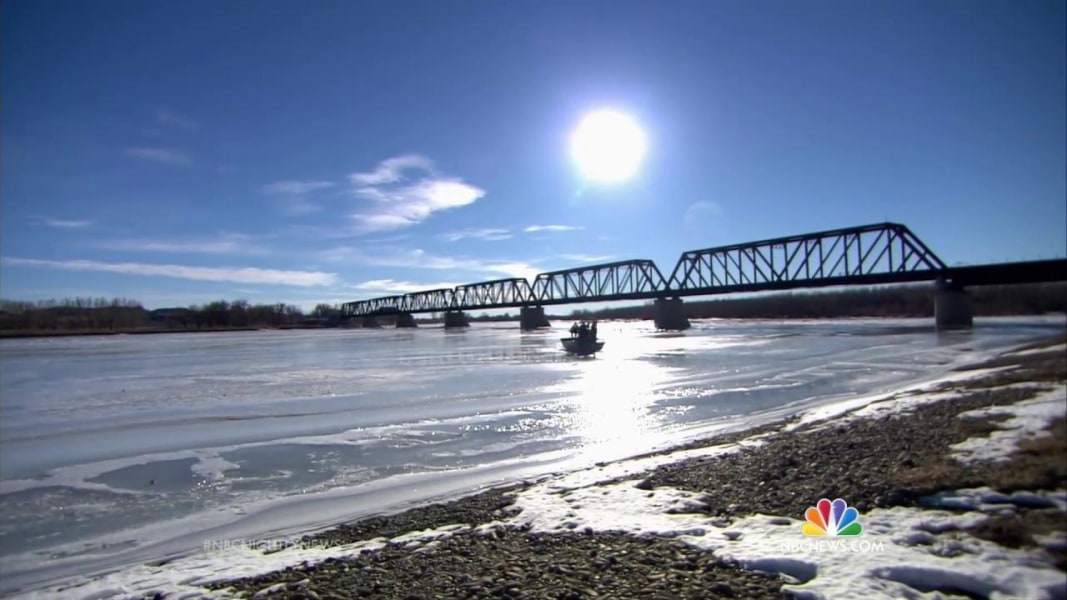New Insights Into Yellowstone's Magma Reservoir And Volcanic Predictions

Table of Contents
The Evolving Understanding of Yellowstone's Magma Chamber
Yellowstone's magma reservoir is a complex and dynamic system, far more intricate than previously imagined. Recent studies, utilizing advanced techniques like seismic tomography and GPS measurements, have significantly refined our understanding of its size, depth, and composition. It's crucial to differentiate between the terms "magma chamber" and "magma reservoir." While a magma chamber is a relatively localized, concentrated body of molten rock, a magma reservoir encompasses a larger, more distributed system of interconnected molten and partially molten rock, including the chamber itself, and associated pathways within the Earth's crust. This vast subterranean system, often referred to as the Yellowstone supervolcano's plumbing system, is the source of the park's remarkable geothermal activity.
- New estimates of magma volume: Recent research suggests a much larger volume of molten and partially molten rock than previously thought, though the exact proportion remains a subject of ongoing study.
- Improved imaging techniques: Advanced seismic tomography and other geophysical methods offer significantly clearer images of the reservoir's three-dimensional structure, revealing its intricate network of pathways and chambers.
- Location and shape of the reservoir: The reservoir is not a single, neatly defined chamber, but rather a complex network extending several kilometers beneath the surface, with variations in magma concentration across its extent. Its irregular shape and vast size make it a significant challenge for researchers to fully map. The understanding of the Yellowstone magma chamber size is crucial for risk assessment.
Analyzing Seismic and Geodetic Data for Volcanic Prediction
Scientists continuously monitor Yellowstone's volcanic activity through a sophisticated network of instruments. Seismic monitoring detects earthquakes and tremor—vibrations caused by the movement of magma and fluids within the Earth. Ground deformation measurements, using GPS and InSAR (Interferometric Synthetic Aperture Radar) technologies, track changes in the surface elevation, providing insights into pressure changes within the magma reservoir.
- Frequency and intensity of seismic events as indicators: Increased seismic activity, particularly swarms of small earthquakes or sustained tremor, could signal magma movement.
- Ground uplift/subsidence as a measure of pressure changes: Inflation (uplift) of the ground surface can indicate an increase in magma pressure within the reservoir, while deflation (subsidence) might suggest the release of pressure.
- Limitations of current monitoring techniques: Despite advancements, interpreting seismic and geodetic data to accurately predict eruptions remains a challenge due to the complex nature of the subsurface system and the inherent uncertainties involved in interpreting these complex signals. Seismic tomography assists, but it still has limits on its resolution.
Improving Volcanic Eruption Forecasting Models
Predicting volcanic eruptions is inherently challenging, fraught with uncertainties. However, new data on Yellowstone's magma reservoir is significantly influencing eruption forecasting models, making them more sophisticated and reliable. Probabilistic forecasting methods, which assign probabilities to different eruption scenarios, are becoming increasingly important.
- Advances in computational modeling: Sophisticated computer simulations are used to model magma movement, heat transfer, and pressure changes within the reservoir.
- Improved understanding of eruption triggers: Research is focused on identifying the specific conditions that trigger volcanic eruptions, such as changes in magma pressure, gas exsolution, or interactions with groundwater.
- Time scales of potential eruptions (short-term vs. long-term): Models are being developed to predict both the long-term probability of a large eruption and the likelihood of smaller, more frequent events.
The Role of Computer Simulations and Modeling
Sophisticated computer models are essential for understanding the complex dynamics within Yellowstone's magma reservoir. These models integrate various datasets, such as seismic data, geodetic measurements, and geochemical analyses, to simulate magma movement and potential eruption scenarios.
- Examples of specific models used for Yellowstone: Various models, based on different physical and chemical assumptions, are employed to explore the potential behavior of the Yellowstone system.
- Data inputs required for simulations: These models require extensive datasets of the physical properties of the reservoir, including the viscosity, temperature, and composition of the magma, as well as the geometry of the surrounding rocks.
- Validation of models against past eruption events: The accuracy and reliability of the models are constantly tested by comparing their predictions to the geological record of past eruptions at Yellowstone.
Conclusion: Understanding Yellowstone's Magma Reservoir for Better Predictions
Our understanding of Yellowstone's magma reservoir has significantly improved due to recent advancements in geophysical monitoring and computational modeling. However, predicting volcanic eruptions remains a complex and challenging task, and there will always be inherent uncertainties. Continued research and close monitoring are paramount to refine our understanding of this dynamic system. By continually improving our ability to interpret data from various monitoring techniques, and by refining computational models using ever-improving data, we can strive to improve the accuracy of volcanic eruption forecasts. Stay informed about the latest insights into Yellowstone’s magma reservoir and the ongoing research on Yellowstone's volcanic systems and magma reservoir predictions to better understand the risks and improve preparedness.

Featured Posts
-
 Ntayj Msabqt Altwzyf Bryd Aljzayr Twjyhat Llmqbwlyn
May 27, 2025
Ntayj Msabqt Altwzyf Bryd Aljzayr Twjyhat Llmqbwlyn
May 27, 2025 -
 Taoiseach Rejects Antisemitic Claims A Response To Criticism
May 27, 2025
Taoiseach Rejects Antisemitic Claims A Response To Criticism
May 27, 2025 -
 Nora Fatehi Rasha Thadani And The 100 Noras Controversy A Reddit Debate
May 27, 2025
Nora Fatehi Rasha Thadani And The 100 Noras Controversy A Reddit Debate
May 27, 2025 -
 Tom Hardys Mob Land Episode 6 Release Schedule
May 27, 2025
Tom Hardys Mob Land Episode 6 Release Schedule
May 27, 2025 -
 Avrupa Ekonomisi Ve Yueksek Belirsizlik Ecb Baskani Lagarde Nin Degerlendirmesi
May 27, 2025
Avrupa Ekonomisi Ve Yueksek Belirsizlik Ecb Baskani Lagarde Nin Degerlendirmesi
May 27, 2025
Latest Posts
-
 La Sentence De Marine Le Pen 5 Ans D Ineligibilite Reactions Et Debats
May 30, 2025
La Sentence De Marine Le Pen 5 Ans D Ineligibilite Reactions Et Debats
May 30, 2025 -
 Marine Le Pen Ineligible La Decision De Justice Et Ses Repercussions
May 30, 2025
Marine Le Pen Ineligible La Decision De Justice Et Ses Repercussions
May 30, 2025 -
 Le Jugement De Marine Le Pen 5 Ans D Ineligibilite Analyse Et Consequences
May 30, 2025
Le Jugement De Marine Le Pen 5 Ans D Ineligibilite Analyse Et Consequences
May 30, 2025 -
 Concert De Medine Subventionne En Grand Est Le Rn S Insurge
May 30, 2025
Concert De Medine Subventionne En Grand Est Le Rn S Insurge
May 30, 2025 -
 Condamnation De Marine Le Pen 5 Ans D Ineligibilite Et Une France Polarisee
May 30, 2025
Condamnation De Marine Le Pen 5 Ans D Ineligibilite Et Une France Polarisee
May 30, 2025
